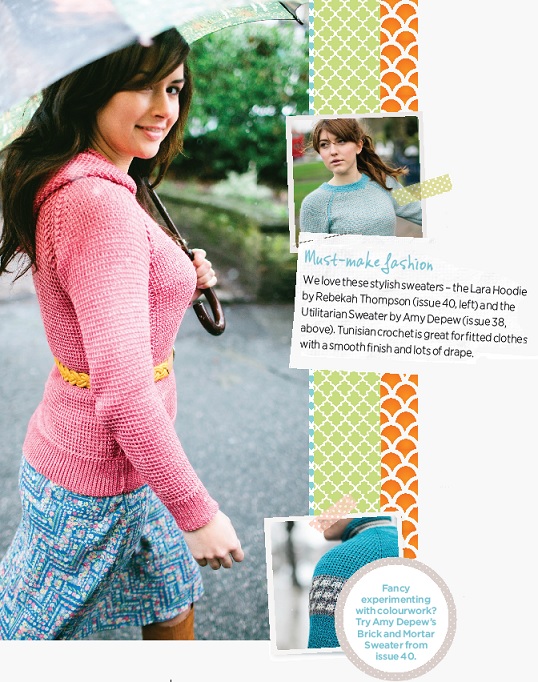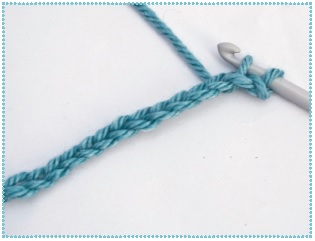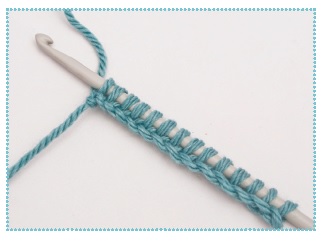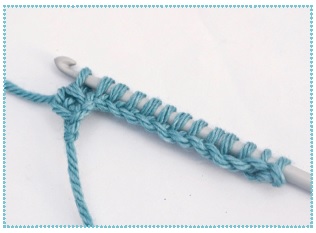
Also known as Afghan, Tricot, Railway and 'Crochet knit', Tunisian Crochet has had a long history of names. The 1882 Dictionary of Needlework lists several additional names for this stitch, two that stand out the most are "Fool's stitch" and "Idiot stitch".
Tunisian Crochet fuses together elements of both knitting and crochet, but while the finished fabric resembles a knitted piece, it has less stretch and is considerably thicker than a knitted piece would be.
Hooks
Traditionally, Tunisian crochet hooks were long steel hooks with a stopper at the end – heavy, rigid and unwieldy to use. Nowadays, there are many different styles to choose from. The traditional straight hooks can now be found in materials such as flexible bamboo or lightweight aluminium, while double ended hooks are perfect for working in the round and hooks with an additional cord holding the weight of the loops means less strain on the hands.
Similar to standard crochet, Tunisian crochet begins with a foundation chain. In 'traditional' crochet you would work a row of stitches and then move on to the next row. Tunisian Crochet uses two distinct 'passes'. The 'forward' pass (working the loops onto the hook) and the 'return' (working the loops off the hook).
Unlike standard crochet – when working Tunisian, never turn your work, the 'right' side of your fabric should always be facing you.
Getting Started
As with any new skill, practice makes perfect. We recommend beginning with a chain of at least 10 stitches (don't do too many when practicing!). When you move on to working patterns they'll specify how many chains you need, as in traditional crochet.

Next we move on to the 'Forward Pass' for the foundation row. This involves simply pulling up a loop in each chain while keeping all of the loops on your hook. To do this, insert the hook into the second chain from the hook, yarn over then pull the loop through
the chain. Continue pulling a loop through each chain and collecting
them on your hook. When you reach the end of the row, count the number of loops on your hook. You should have the same number of loops on your hook as the number of chains in your foundation.

To work the loops off of the hook and complete a standard return pass, work a yarn over and pull it through one loop for the edge. Next, yarn over and pull through two loops.

Continue in this way (yarn over and pull through two loops) until only one loop remains on the hook. You have now completed your first forward and return pass!
Next Tuesday (17th December) we'll reveal part two. Including our guide to TSS (Tunisian Simple Stitch) and (TKS) Tunisian Knit Stitch.
Tell us your thoughts below.
Sorry, there have been no comments on this blog post yet - why not be the first to leave your opinion?